It’s only two months since Storm Emma swept Ireland, with Force 12 Easterlies spreading havoc and blizzards and rumours and tall tales of total disaster along the East Coast writes W M Nixon. One such tall tale which began circulating almost immediately was that the 20-strong 1898-founded Howth 17 class had lost all of the seven boats which had been laid up for the winter in the time-honoured fashion in the Long Shed down at the end of the sea-swept East Pier.
The shed’s roof had been stove in by enormous breakers, and many of the first reports talked of “matchwood” within. But once the storm had moved on and some cooler investigation became possible, the word was more hopeful. Nevertheless it was soon clear that a real community effort would be needed to extract the boats – or the remains of boats - as soon as possible, as there was danger of more damage being inflicted by the next lot of bad weather, with the building expected to collapse even further.
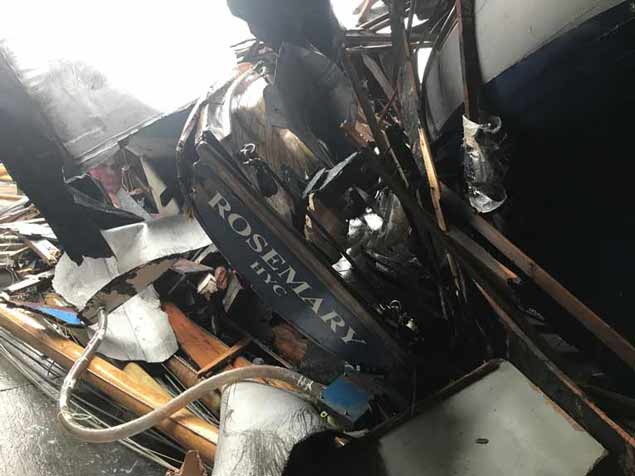 It didn’t look good – Rosemary as she was on March 1st
It didn’t look good – Rosemary as she was on March 1st
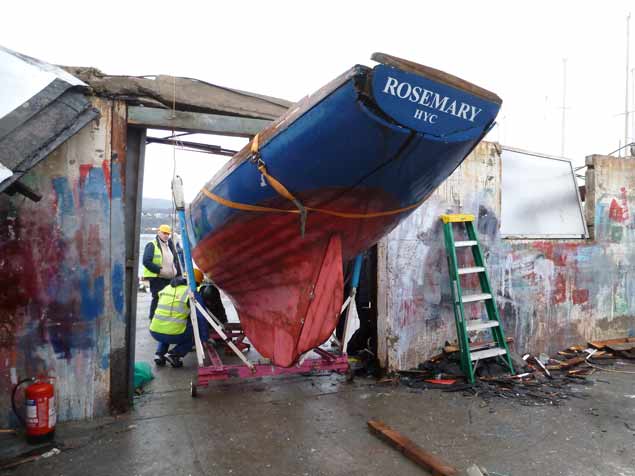 With willing helpers, Rosemary is already looking saveable on March 3rd……Photo: W M Nixon
With willing helpers, Rosemary is already looking saveable on March 3rd……Photo: W M Nixon
 …..and is carefully extracted from the remains of the shed, with her flattened after-deck much in evidence. Photo: W M Nixon
…..and is carefully extracted from the remains of the shed, with her flattened after-deck much in evidence. Photo: W M Nixon
The volunteers assembled the way they do when the chips are down, and in one very long but well worthwhile day’s work, the boats were extracted and gathered safely in the Howth YC compound. There, a realistic assessment could begin by Larry Archer, the multi-talented boatbuilder who is one of the many specialists who are prepared to bring an extra level of dedication to this very special old class whose owners vary enormously in every way, including their availability of resources.
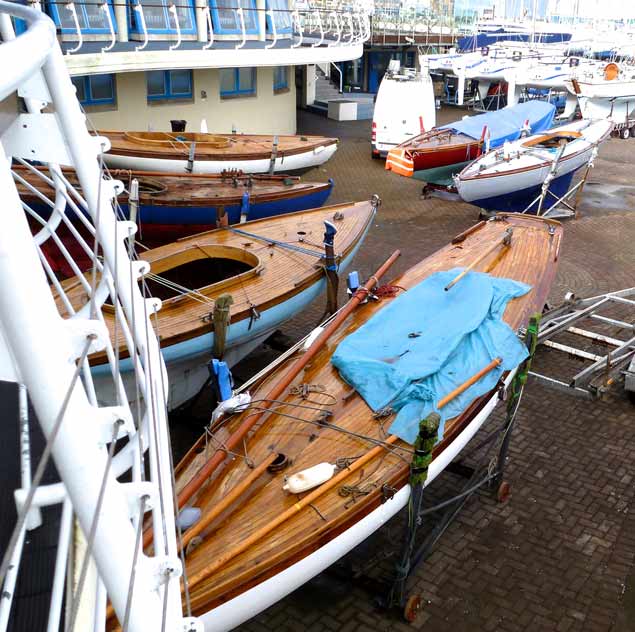 A good day’s work. The six survivors of the Long Shed collapse looking remarkably well at Howth YC, but repairs – some very extensive - were needed in every case. Photo: W M Nixon
A good day’s work. The six survivors of the Long Shed collapse looking remarkably well at Howth YC, but repairs – some very extensive - were needed in every case. Photo: W M Nixon
He was able to confirm that by some miracle, five boats had suffered relatively superficial - or at least quickly repairable –damage. Of the other two, Anita (Number 6, built 1900) would be a write-off were she not a classic, and therefore is a re-build proposition using her original keel. And as for Rosemary (Number 12, built 1907), last seen apparently flattened under another boat and bits of roof - she was in fact eminently restorable, but it would take until mid-summer to finish a proper job on her, after he’d done the smaller jobs on the other boats.
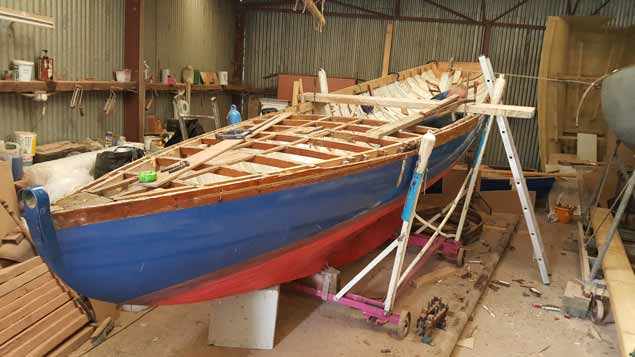 Once she was in Larry Archer’s shed, Rosemary’s badly-damaged deck could be removed………..Photo: Davy Jones
Once she was in Larry Archer’s shed, Rosemary’s badly-damaged deck could be removed………..Photo: Davy Jones
Like everyone else, the Howth 17s have been slowed back by the longest winter anyone can ever remember, but their first scheduled race of the year on Tuesday April 24th saw boats come to the line. Then last Saturday afternoon (April 28th) they had topsails appearing for the first time in 2018 (they aren’t used in evening races), and with six boats racing, Ian Malcolm with the 1898-built Aura led the way to signal the class’s continuing recovery. But perhaps more importantly, in second place was the 1988-built Erica, one of the “Long Shed Survivors”, sailed by Shay Gilna.
Meanwhile, the images from Larry Archer’s shed in the depths of Fingal show how the 111-year-old Rosemary is going through her time in intensive care. The big stages of the restoration can seem to happen quite quickly, but it is the proper finishing, including the installation of new floors, and the re-building of the deck, which will take time.
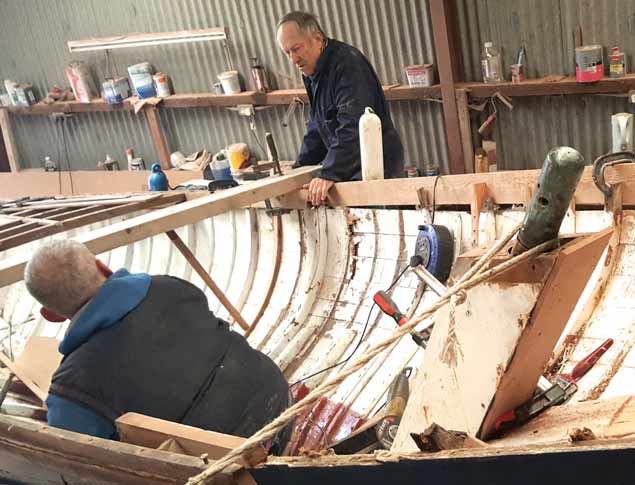 …..and Larry could get a clear idea of everything that was required. Photo: Davy Jones
…..and Larry could get a clear idea of everything that was required. Photo: Davy Jones
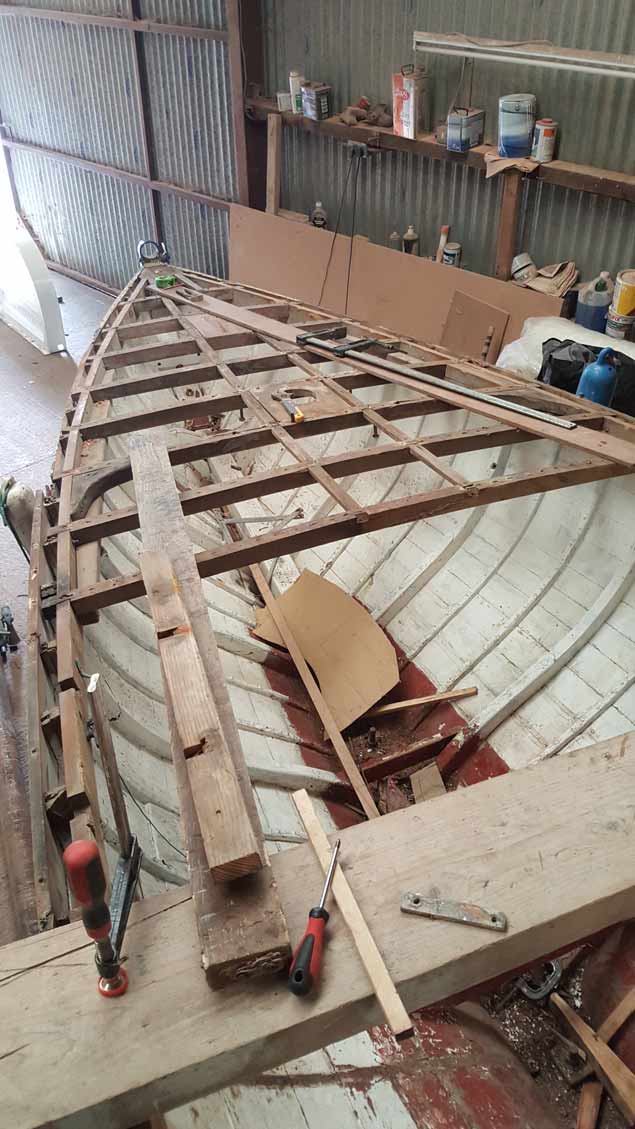 The forward timbers of the original deck may be re-used…..Photo: Davy Jone
The forward timbers of the original deck may be re-used…..Photo: Davy Jone
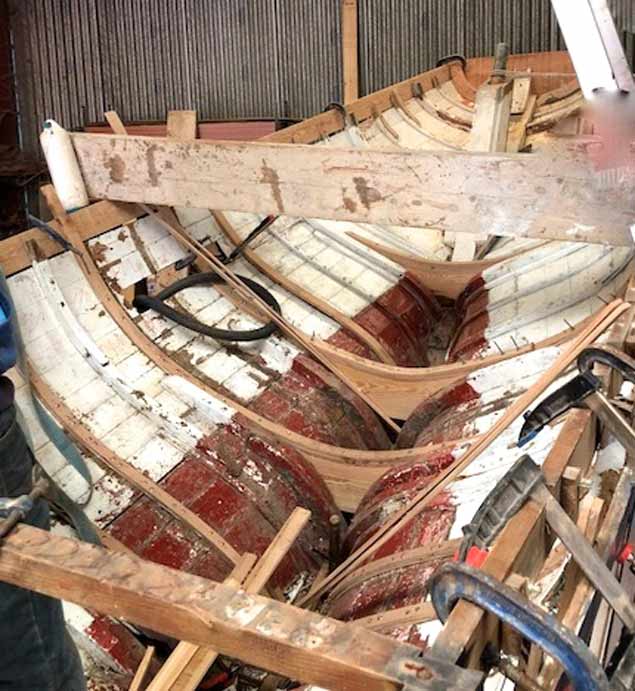 ….but down aft, the laminating-in of new floors is essential for restoring Rosemary to full strength. Photo: Trish Nixon
….but down aft, the laminating-in of new floors is essential for restoring Rosemary to full strength. Photo: Trish Nixon
But as of yesterday, the vitally important newly-laminated floors were being installed to put the backbone back in the old girl, and all being well, owners George Curley and Davy Jones (they’ve been in partnership for 45 years) will be there competing with Rosemary in the Howth 17 “Worlds” in August.



























































